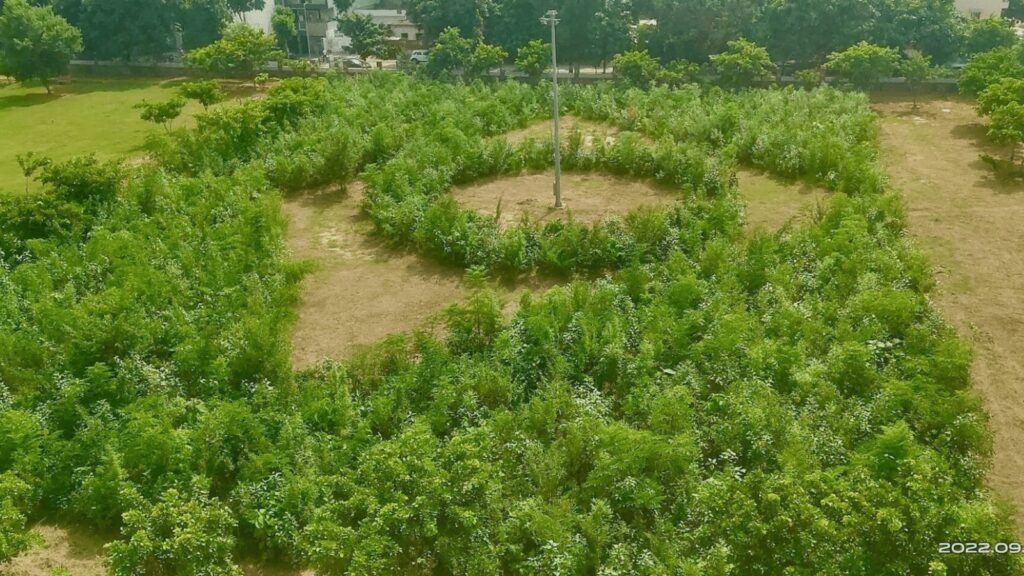Miyawaki forest plantation is fascinating complex ecosystems, in balance with today’s soil and climate conditions.
With the current climate change crisis and dire warnings about biodiversity loss, it is essential to create diverse, healthy forests as soon as possible to meet international targets. Miyawaki forests have higher biodiversity than nearby woodlands, so it’s an ideal method for creating diverse forest ecosystems.
RELEVANT SUSTAINABLE GOALS


Miyawaki Method principles
The essential principle of the Miyawaki method is using species of trees that would occur naturally in that area and that work together to create a diverse, multi-layered forest community. This creates a resilient and thriving forest ecosystem with species that complement each other, restoring “native forests by native trees”. The selection of species to plant in a given area was originally linked to the theory of potential natural vegetation (PNV), in other words the vegetation that would occur in a specific area without further human interference. Extensive surveys have been carried out globally to determine the PNV across the world (see Hengl et al. 2018 for a summary), although there is fierce debate about the most effective way of defining ‘native’ species.
The History Of Miyawaki Method
The Miyawaki Method is named after its creator, Akira Miyawaki, a Japanese botanist and plant ecologist with a special interest in phytosociology, the study of how plant species interact within communities. Miyawaki studied phytosociology with Reinhold Tüxen in Germany after completing a PhD in plant ecology. Upon returning to Japan, he began to study ancient forests found around temples and shrines known as Chinju-no-mori, sacred groves, which he applied PNV principles to. These fragments of forest were composed of trees such as Japanese blue oak (Quercus glauca), Japanese chestnut (Castanea crenata) and Sakaki (Cleyera japonica), rather than coniferous trees such as larch (Larix kaempferi) and Japanese cedar (Cryptomeria japonica), which had been introduced from other areas and dominated local forests. A distinct layering of forest species was also evident in the forest structure, with slow-growing canopy species, tree species, shrubs, and herbs covering the ground.

In contrast to naturally grown forests that can take more than 100 years to grow, the Miyawaki method can grow forests in only 20-30 years, including smaller green patches that grow in two years. These forests are known to be 30 times more dense, grow 10 times faster, have very little maintenance after two or three years of planting them, and don’t require too much space. This method is finding resonance with individuals, communities, and organizations for all of these reasons.
Experts said Miyawaki method is welcomed for urban environments that are fast losing green cover but do not match the complex forest ecosystem.
These techniques cannot be substituted for natural forest, which represent the non-artificial cycle of carbon, oxygen, minerals and biodiversity, and cannot be replicated by artificial means. For urban spaces, these small green zones may have limited benefits such as reduction of particulate matter, improved oxygen supply, and minimal micro-climatic changes. However, these urban greening concepts cannot be undermined as there is hardly any land available amid the concrete expanse in major cities in the country,
Dr. Subhash Ashutosh, director-general (D-G), Forest Survey of India (FSI), Dehradun.
Lead image courtesy of Pradeep Tripathi via Corporate Social Responsibility (CSR) & Sustainable Development (sustainability) group



